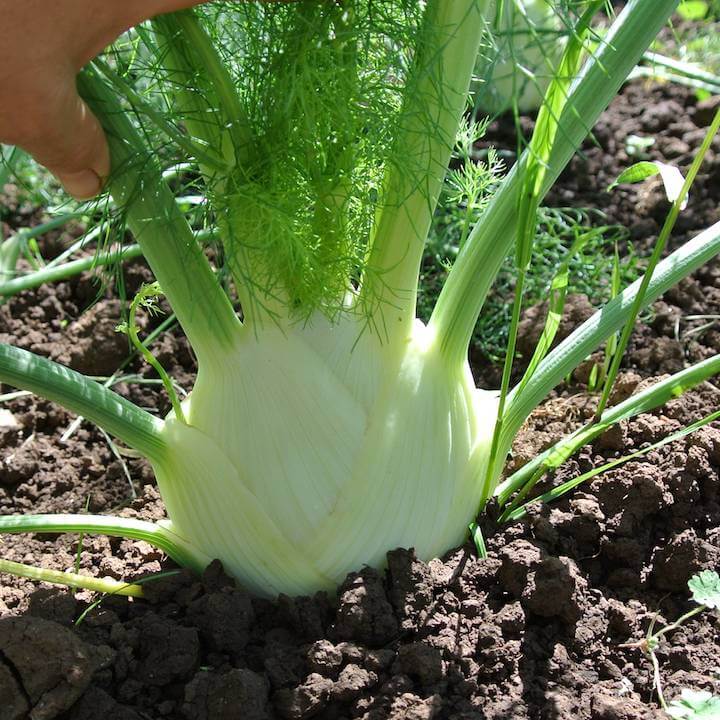The information on this page applies to seedlings sold by LEAF Nursery during our 2021 Seedling Sale.

Foeniculum vulgare. A superior bulbing/Florence fennel that placed very high out of 14 fennel varieties in the 2015 Northern Organic Vegetable Improvement Collaborative (NOVIC) taste tests. Bulbs mature in about 75 days from spring sowing but can also be summer planted for fall harvest. Bulbs hold in the field for weeks – they seem to just get fatter the longer they are in the ground. Mantovano is great when young and tender, but we really like it at its full-grown size when we cook it in just about everything: It may be blasphemous to some but fennel can be a fun substitute for onions in many dishes. When sliced thinly, the texture is similar and the flavor can be a nice change for those of us who don’t love onions.[1]
Seed Type
| Organic | Heirloom | Non-GMO | Hybrid | Open-pollinated | Untreated |
Additional Information
| Container Friendly | Trellis Needed | Easy to Grow | Pollinator Friendly |
When to Plant Your Seedling
| Jan | Feb | Mar | Apr | May | Jun | Jul | Aug | Sep | Oct | Nov | Dec |
Growing Conditions
| Light | Temperature | Soil | Water |
|---|---|---|---|
| Full Sun | 55-100 F | Well amended, good drainage | Regular watering, likes moist soil |
Planting Tips
| Plant Spacing | Plant Size | Days to Maturity |
|---|---|---|
| 12" | 12-36" tall | 75 days from seed |
- Additional instructions: Although a perennial, most fennel is grown as a cool season annual for harvesting as bulbs. Fennel, even bulbing fennel, will self-sow easily and can take over an area if not controlled. Fennel attracts many beneficial insects and is a host plant for swallowtail butterflies. There are many culinary uses for fennel from around the world; enjoying the bulb as a vegetable, fronds as an herb, and seeds and pollen as spices. In grocery stores, fennel is sometimes labeled sweet anise, but anise seeds come from a totally different plant, Pimpinella anisum.[2]
- Harvesting instructions: Harvest the bulb-like base when it is large and plump, 4–6" across, typically 60-90 days after transplanting. Cut just above the soil line. Pollen can be collected from flower blooms by shaking flower heads into a plastic bag. Pick leaves at any time during the growing season. Do not remove more than 1/3 of the foliage. Harvest seeds when flower heads turns brown. Cut the seedheads and place in a paper bag in a cool, ventilated, location. The seeds will fall off when dry and can then be collected.[2]
Common Diseases and Pests
- Aphids, Thrips, Cabbage moth larvae and Annise swallowtail larvae. (While the butterflies are welcome and damage from the larvae eating the foliage is negligible on mature plants, young seedlings can potentially be overwhelmed. Pick off as needed.)
Useful Resources
- https://www.adaptiveseeds.com/product/vegetables/fennel/fennel-mantovano-organic/(Seed Source)
- http://mgsantaclara.ucanr.edu/garden-help/vegetables/fennel/
- https://sfbaygardening.com/resources/bay-area-planting-calendar/
If you bought this seedling and have any questions or feedback, let us know in the comment section below.